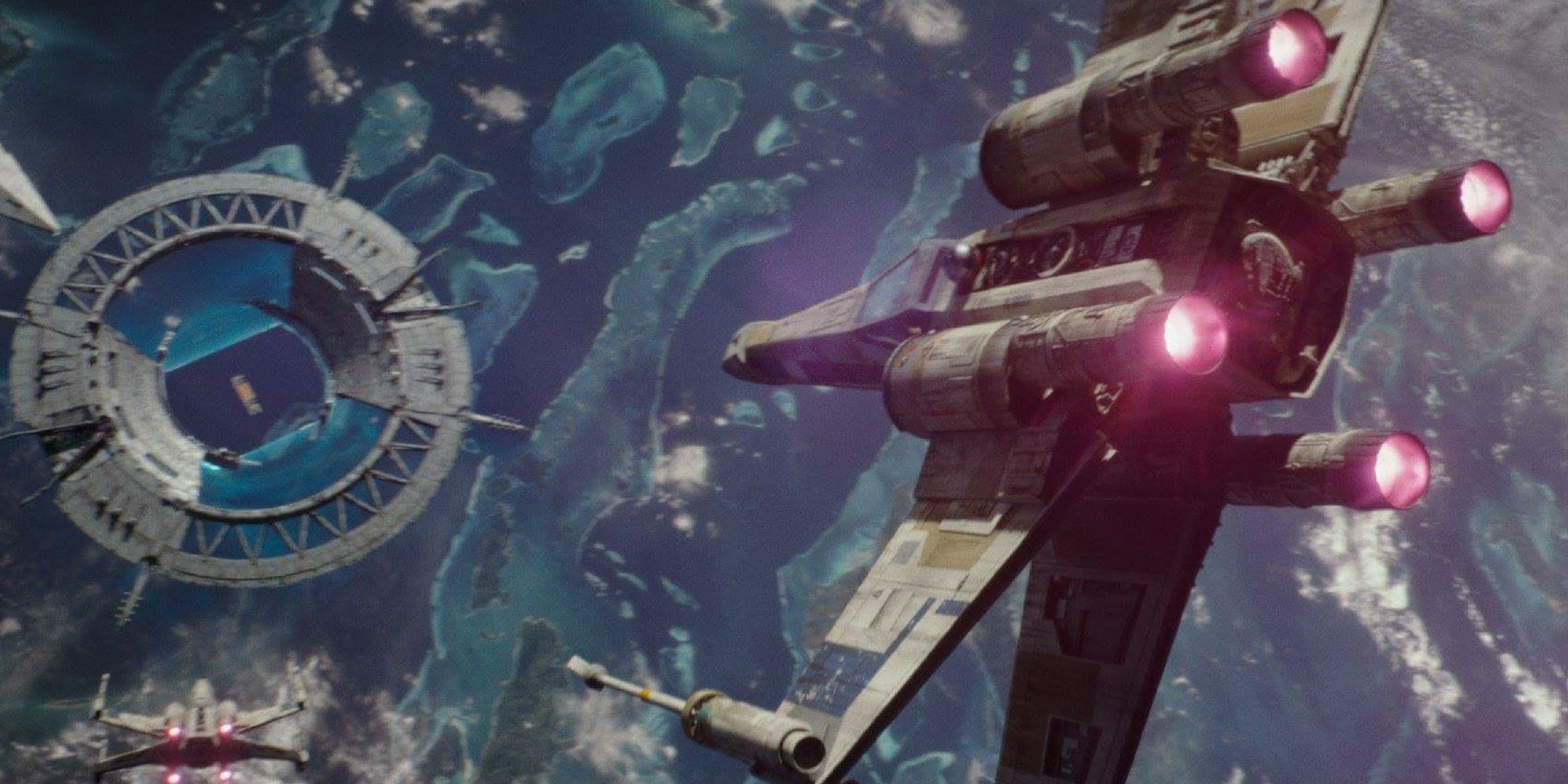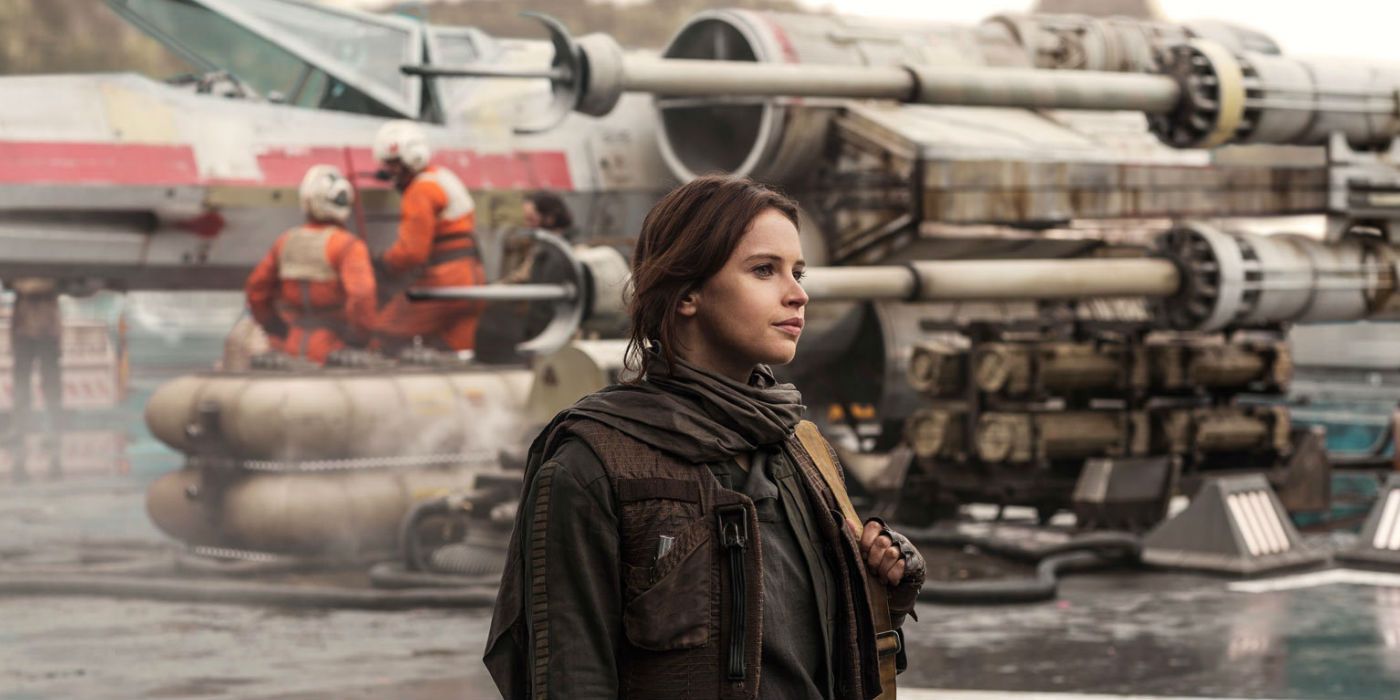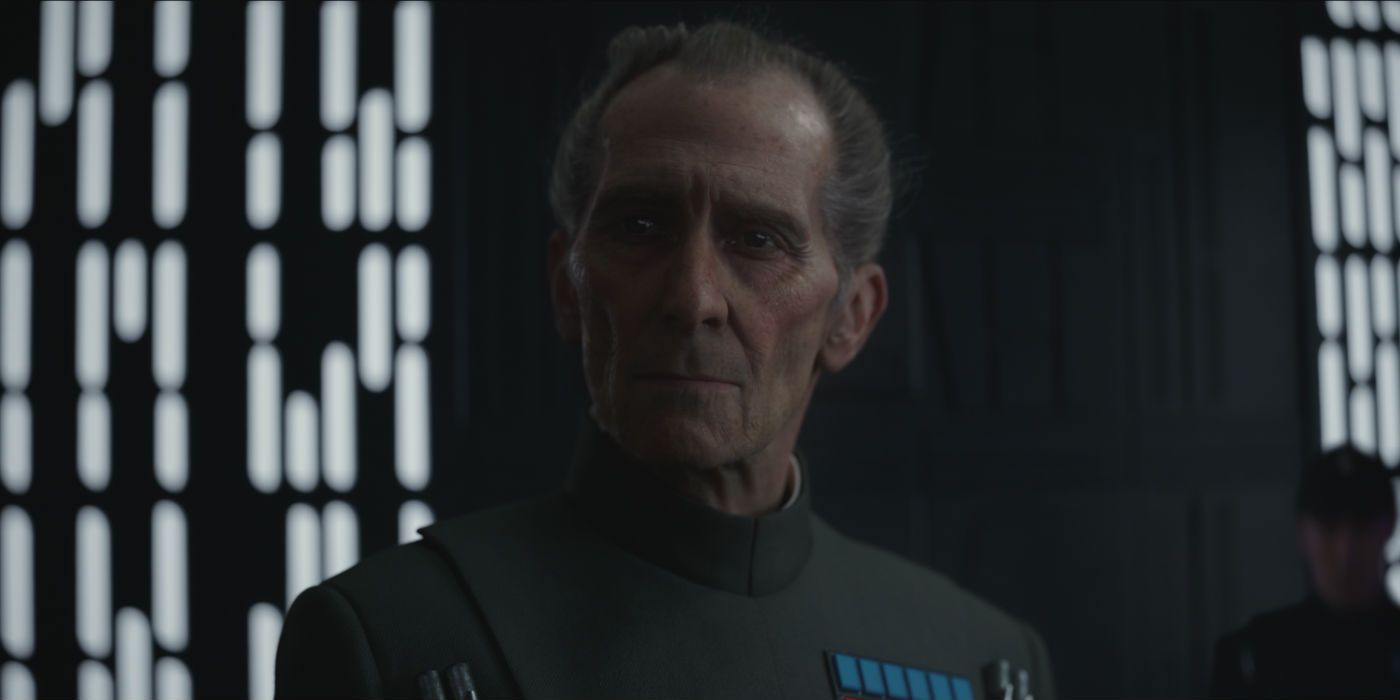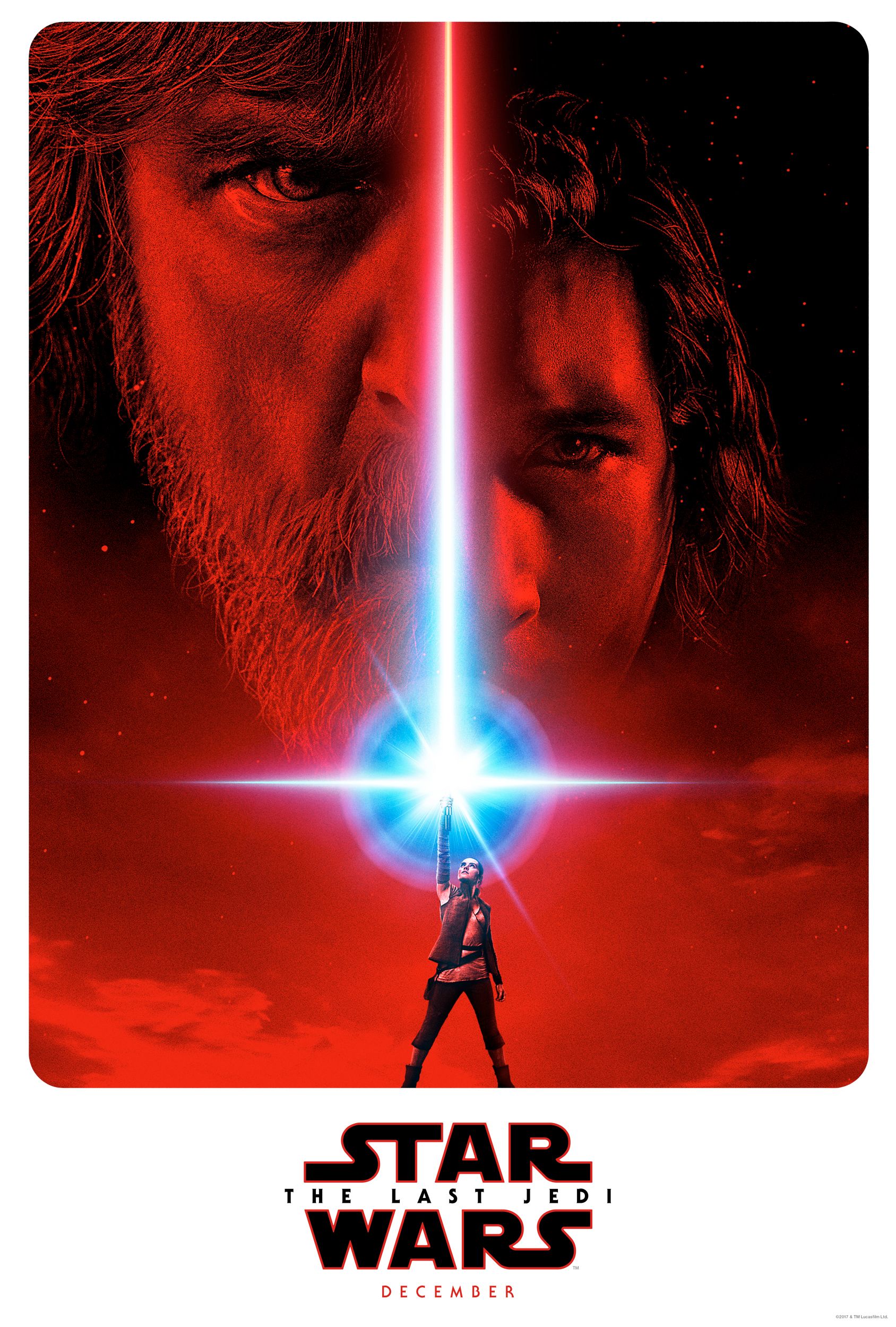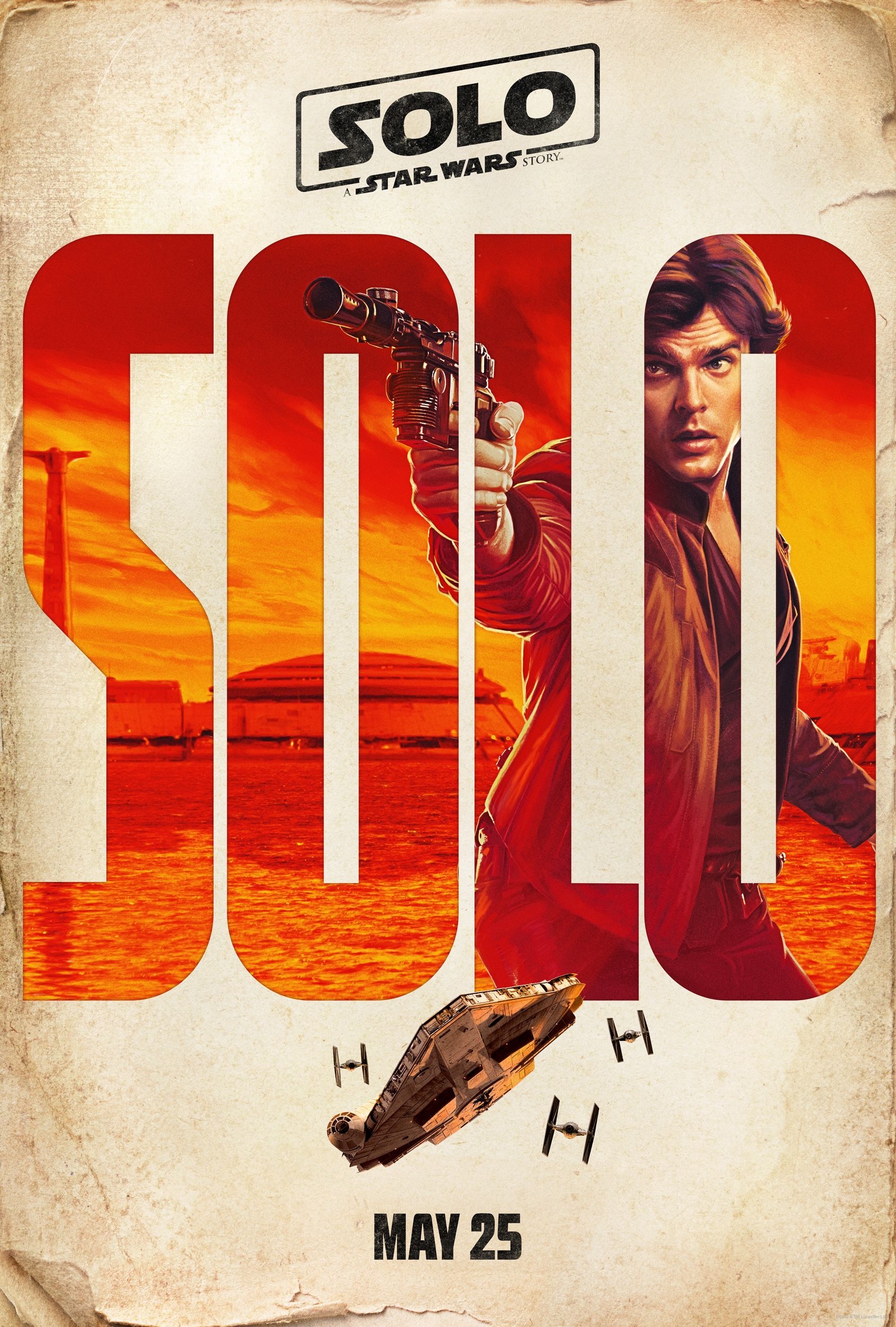When George Lucas was working on the original Star Wars, he learned that 20th Century Fox's in-house visual effects house had been shut down. In order to bring the otherworldly elements of his galaxy far, far away to life, the visionary filmmaker founded the company Industrial Light & Magic (ILM), which is now one of the premier VFX businesses in all of Hollywood. For 40 years, they've contributed to several of the biggest box office hits of all-time, continuously wowing audiences with what's possible as technology evolves and directors look to push the envelope. For many people, ILM outdid themselves on Rogue One: A Star Wars Story.
Not only were the set pieces state-of-the-art and CGI recreations of the late Peter Cushing and a young Carrie Fisher eerily lifelike, the very idea of Rogue One was generated by visual effects supervisor John Knoll, who also served as an executive producer on the spinoff. All he did was pitch the idea to Lucasfilm president Kathleen Kennedy, and the rest is history. Rogue One earned mostly positive reviews from critics and fans en route to a worldwide box office gross of more than $1 billion, kicking off the Star Wars anthology series on a high note. Now, people can't wait to see what other stories the studio has to tell.
Screen Rant had the opportunity to visit ILM for a press event promoting the home media release of Rogue One and spoke with Knoll about a variety of topics, including the genesis of the idea, the controversial methods to bring Grand Moff Tarkin back to the big screen, and crafting a visual consistency between this prequel and the original film.
This [Rogue One] all started with you. This was your idea. And I know that it originated from the opening crawl, but I’m wondering why you felt this was an important story to tell on film.
John Knoll: Well, there are a variety of reasons. Because it’s sort of a riff on those lines in the opening crawl, the core of the idea comes from George Lucas. Shortly after Kathy [Lucasfilm president Kathleen Kennedy] announced this new slate of Star Wars films, there were of course 7, 8, and 9, and everyone drew their own conclusions about how we were going to continue the Skywalker family saga. But what was intriguing to a lot of us here was we were going to do these standalone stories that are adventures that take place in the Star Wars universe, but aren’t necessarily part of that through-line. And, there was a lot of speculation as to what some of those might be and I think the Han Solo story had already been announced. And we were talking about some of the things we could do. I don’t know how serious I was about it, but I started doing these elevator pitch versions. ‘Imagine Seal Team Six of the Star Wars universe who are on a desperate mission to penetrate into the most secure facility in the Empire – the heart of the military industrial complex. Desperate mission to steal the Death Star plans. How about that?’ [Imitates others] ‘Oh, actually, yeah that sounds interesting.’
And so, I told it a couple of times to different friends over lunch or chatting in the hallway, and each time I thought a little bit more about it and added some more details to it. And just as a mental exercise I was thinking through what are the arcs and if you’re telling this in a classic three act structure, what are the major plot elements and who are these major characters, and what are their emotional involvement in this whole thing. It was a trivia night – we do this annual charity fundraiser trivia night – I was on a team with a couple friends of mine, and we got there about a half hour before the thing was going to start. And so we were just having a little bite to eat at our table before the thing started and my friends were like, ‘Tell me this Star Wars idea you have.’ And so, I did the most elaborate version yet – a 20-minute long version – and at the end of it, everyone at the table was like, ‘Oh my God! You have to pitch this to Kathy. You have to.’ As soon as this friend of mine had said that, I thought ‘I kind of do have to because if I don’t, I’ll always wonder what would have happened.’
Do you have any other ideas that you’re going to pitch?
John Knoll: I do have one more idea that I may or may not pitch. I’ve got it about 3/4 figured out and if I can solve that last portion of it, I’ll see if Kathy’s interested. She may throw me out of her office [laughs].
Well, Rogue One was a hit, so maybe she’ll listen to you for the next one.
John Knoll: You never know. It might not be a good idea. I think it’s cool, but you never know.
Shifting gears to the visual effects. With the reshoots and everything late in development, were you guys crunched at all for time towards the end?
John Knoll: Yeah. I suppose one of the things that gives me a little bit of an advantage over the other pictures I’ve worked on is the producer has a lot more visibility into the mechanics of how the edit was shaping up and where we felt like ‘You know, we should fix this scene and that doesn’t make sense. The whole thing’s running long, so we’re going to have to pull this story thread out and if we do that, it kind of leaves a hole. So if we can get support from Disney, we should probably do a pickup shoot for that and heighten the drama at the end.’ For example, that great Vader scene at the end, that wasn’t what we originally shot. Vader stayed on the bridge of his Star Destroyer and devastated Raddus’ ship and Leia’s ship escaped. But, we were looking at the edit, and one of our editors had this idea of, ‘Wouldn’t it be better if Vader boards Raddus’ ship and is fighting through Rebels trying to get to the plans before they escape and it’s a much narrower call.’ And as soon as we heard that, we felt it would be way better.
I actually think it says some really nice things about the support that we’ve gotten from Disney that they would let us go, ‘Hey, we think we can make the movie better by doing this, this, and this.’ And it’s not cheap to stage a pickup shoot like that. But their attitude is very supportive about you should make the best movie you can make. They’re betting on quality. It really was nice to have that opportunity. Knowing that we were going to change this scene and this scene and add that and pickup that, there were a bunch of scenes that had been turned over that we kind of knew we should hold off on a little bit because we’re going to change the first part of that. So that meant we were more backloaded than the original plan. So the show got bigger. I think originally we were supposed to be 800 shots or so and ended up being 1700.
Oh wow.
John Knoll: And then, we were supposed to be full in shot production by February and we didn’t really get the machine into full ramp until after we got pack from pickup shoots, and that wasn’t until the end of July.
I read that the Tarkin recreation took 18 months to complete. If he had more screen time than he did in the final movie, would that have been logistically possible still?
John Knoll: It would have been possible, it’s just that those shots are hard. They take a lot of energy to get right. The shot where we first see him, and he’s delivering that ‘When has become now’ line, that was our test shot because it was a long bit of dialogue that goes into a fairly tight close-up. We tested every bit of technology in that shot. We did iteration after iteration of trying things. I think the take that’s in the movie is the 200th iteration.
Is that something that was specific for Rogue One or are you going to look into that on a case-by-case basis for future movies?
John Knoll: Well, it’s a good capability to have. We’ve dabbled some in digital humans in the past. Things like on Lemony Snicket there was a digital baby in close-up. We’ve done lots of digital doubles in pictures for stunt purposes and on Terminator 4, we did a 1984 Arnold Schwarzenegger for that. So, there’s occasionally call for doing these kinds of digital humans in close-up. And the way you get good at that is you do it. I think that some of what we learned from doing this will make it easier on upcoming projects. And yeah, sometimes there are story reasons where it makes sense to do that. It’s an expensive and very labor-intensive process, so it’s not cheap to do. So I don’t think you’d do it just because ‘Hey, wouldn’t it be fun?’
It’s not going to happen on young Han Solo? You’re not going to see young digital Harrison Ford up there?
John Knoll: I think the approach that we’re taking for the young Han Solo movie is the right one. And we cast a really great actor who has the right attitude and look for it. And I think he’s going to own that role and it’ll be great.
The most interesting part of this film that I found is it’s a prequel to the original, but it’s made 40 years later with all this advanced technology. So what was the biggest challenge in creating some sort of aesthetic consistency between those two?
John Knoll: One thing that was a general theme on the show was match your memory of things, not necessarily the reality of them. What that means is that we were depicting a lot of things that you had seen in the other films like the Yavin base and Star Destroyers and X-wings, and stormtroopers, and a lot of things that are very familiar. But when you go back and actually look at what was in the original film – we went out to the archive building out on the Ranch and we very extensively photographed a lot of those original miniatures. And, I remember them being better than they actually were in reality. So, what we would do was try and match how you remember them, not necessarily how they actually were. Maybe another good example of that are the stormtroopers. I remember those stormtrooper costumes very well, they’re super iconic and very familiar in everyone’s memory. They have some of the original helmets from New Hope and they kind of look like a high school craft project. They’re actually kind of lumpy and asymmetric and really sloppy in how they’re painted.
And it was fine for then on a film that in theaters you were down two optical generations and it was film print that was jumping around in the gate with a lot of grain on it, so there was very limited resolution. We knew we were going to be shooting this with this Alexa 65 camera that’s 6.5K on modern digital projectors. You’re just going to be seeing these things better. And so, our stormtrooper helmets are a complete reimplementation of that design. It’s still the original design, it’s just way better executed, and if you put them side by side, you go, ‘Oh my God. That was in a movie? I can’t believe that. This is how they should look.’ But, you take a few steps back and you can’t tell the difference. So it’s that kind of thing. It’s matching your memory more than maybe what the reality was.
Cool. Thank you.
John Knoll: Thank you.
NEXT: Alan Tudyk's Oscars Idea for Mo-Cap Actors
Rogue One: A Star Wars Story hits Blu-ray April 4, 2017.

